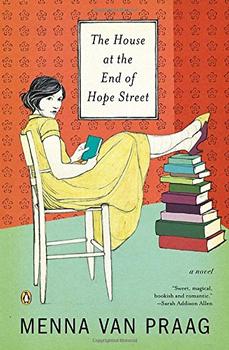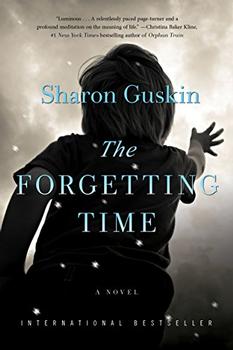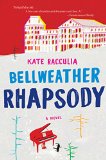Summary | Excerpt | Reading Guide | Reviews | Beyond the book | Read-Alikes | Genres & Themes | Author Bio

Filled with a colorful and unforgettable cast of literary figures, The House at the End of Hope Street is a charming, whimsical novel of hope and feminine wisdom.
Distraught that her academic career has stalled, Alba is walking through her hometown of Cambridge, England, when she finds herself in front of a house she's never seen before, 11 Hope Street. A beautiful older woman named Peggy greets her and invites her to stay, on the house's usual conditions: she has ninety-nine nights to turn her life around. With nothing left to lose, Alba takes a chance and moves in.
She soon discovers that this is no ordinary house. Past residents have included Virginia Woolf and Dorothy Parker, who, after receiving the assistance they needed, hung around to help newcomers - literally, in talking portraits on the wall. As she escapes into this new world, Alba begins a journey that will heal her wounds - and maybe even save her life.
Filled with a colorful and unforgettable cast of literary figures, The House at the End of Hope Street is a charming, whimsical novel of hope and feminine wisdom that is sure to appeal to fans of Jasper Fforde and especially Sarah Addison Allen.
Coupled with the author's wonderful ability to convey emotion that resonates spot-on, the book feels both magical and grounded at the same time...continued
Full Review
 (775 words)
(775 words)
(Reviewed by Tamara Ellis Smith).
Photographs of famous historical women – from writers to activists to painters to doctors – cover every inch of wall space at 11 Hope Street, the setting for Menna van Praag's novel, The House at the End of Hope Street. Among them are two sets of famous sisters: Virginia Woolf and Vanessa Bell; and Elizabeth Garrett Anderson and Millicent Garrett Fawcett. Here's a little something about these sisters.
Vanessa Bell and Virginia Woolf
Vanessa Stephen was the oldest sister in the Stephen family. She was born in Westminster, London in 1879, was home-schooled for many years, and then later attended both Sir Arthur Cope's Art School and the painting school of the Royal Academy in London. In her twenties, she moved with Virginia ...

If you liked The House at the End of Hope Street, try these:

by Sharon Guskin
Published 2017
Noah wants to go home. A seemingly easy request from most four year olds. But as Noah's single-mother, Janie, knows, nothing with Noah is ever easy. One day the pre-school office calls and says Janie needs to come in to talk about Noah, and no, not later, now - and life as she knows it stops.

by Kate Racculia
Published 2015
A high school music festival goes awry when a young prodigy disappears from a hotel room that was the site of a famous murder/suicide fifteen years earlier.
I write to add to the beauty that now belongs to me
Click Here to find out who said this, as well as discovering other famous literary quotes!